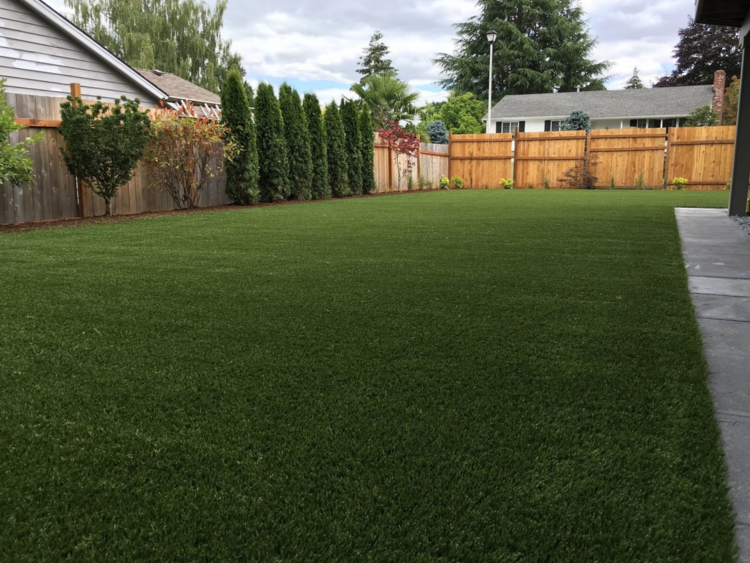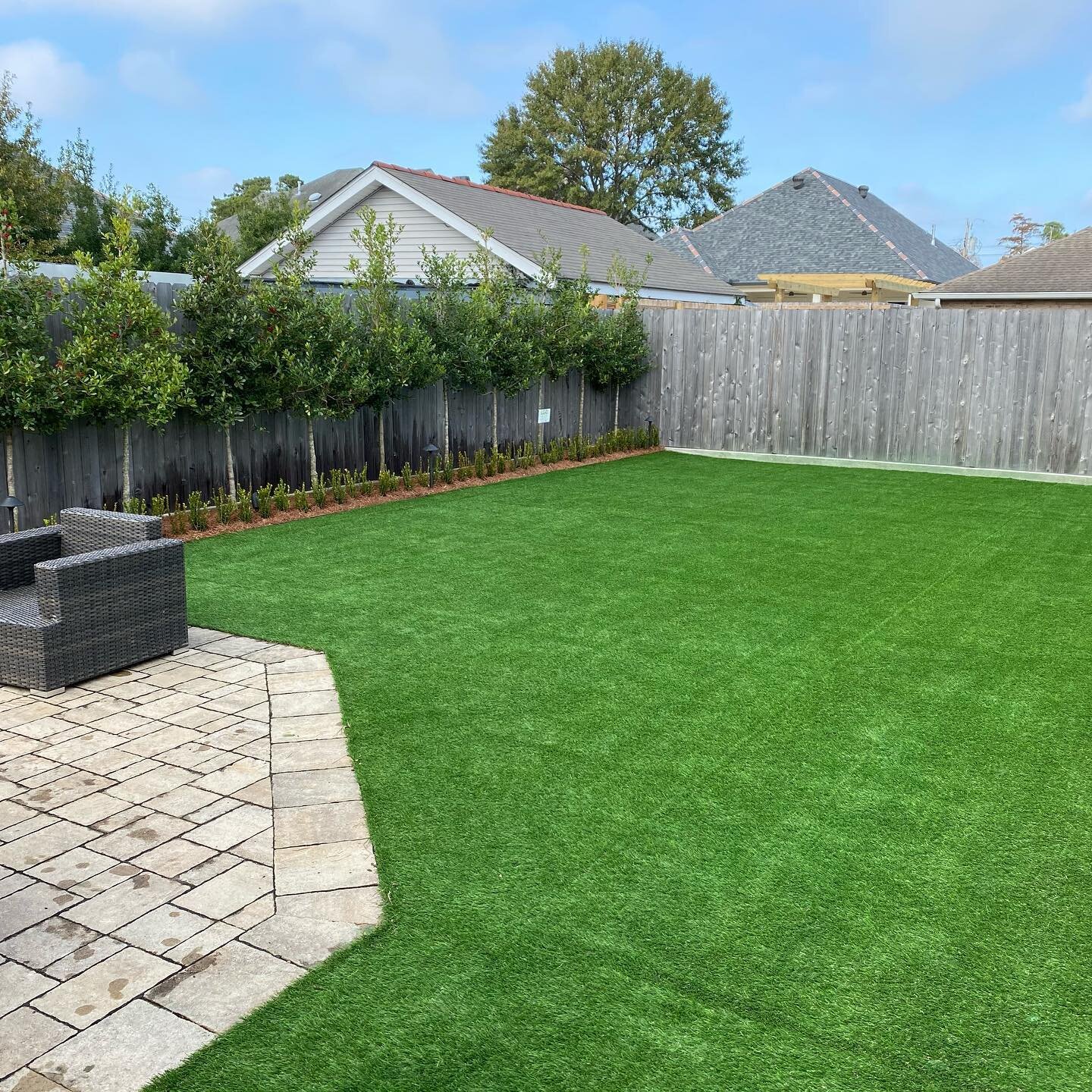Find Reliable Artificial Turf Companies Phoenix for Your Outdoor Needs
Find Reliable Artificial Turf Companies Phoenix for Your Outdoor Needs
Blog Article
See Why Homeowners Prefer Synthetic Grass for Lasting Landscape Design Practices
As homeowners significantly focus on sustainability in landscaping, synthetic grass has actually emerged as a compelling option to standard lawn. Its ability to save water, minimize maintenance initiatives, and minimize ecological effect placements it as a sensible option for those seeking environment-friendly options. The visual appeal and versatility of man-made grass provide to diverse design choices. However, the implications of this change prolong past mere ease and looks, motivating a closer evaluation of how these choices influence wider environmental end results. What stays to be checked out is the full scope of benefits that artificial grass can provide to home owners and the atmosphere alike.
Water Preservation Conveniences
One of the most significant advantages of synthetic grass is its duty in water preservation. In comparison, fabricated lawn removes this need completely, as it does not call for watering.
Additionally, the installation of synthetic grass can add to a much more sustainable landscape. Property owners can substantially lower their water costs, permitting reallocation of sources to various other ecological efforts or house usages. Furthermore, artificial lawn is developed to withstand numerous weather conditions without the demand for supplementary watering, making it a perfect choice for regions encountering water scarcity.
The environmental benefits expand beyond instant water savings. By minimizing water usage, artificial grass aids to minimize the impacts of climate change, preserving vital environments that are intimidated by too much water extraction. As sustainable landscaping methods get grip, synthetic lawn becomes an accountable option for house owners seeking to create environment-friendly outside areas.
Reduced Maintenance Initiatives
Synthetic lawn substantially reduces maintenance initiatives compared to standard grass lawns. With fabricated turf, property owners can get rid of the lengthy jobs related to all-natural landscape design, such as mowing, feeding, and weeding. This not just conserves important time but also lowers physical labor, making yard treatment easily accessible for individuals of any ages.
Conventional lawns require constant cutting to maintain a visually pleasing elevation, whereas artificial grass stays constantly rich without the demand for cutting. Furthermore, home owners no longer need to use chemicals or plant foods, which are typically required to keep natural yard healthy.
Moreover, man-made lawn is resistant and resilient, calling for marginal maintenance past periodic brushing and rinsing to get rid of particles. This simplicity of maintenance permits homeowners to enjoy their outdoor spaces without the consistent fear of upkeep, providing even more time for recreation and family tasks. Eventually, the lowered maintenance efforts related to synthetic grass make it an appealing alternative for those seeking a low-maintenance, aesthetically appealing landscape.

Ecological Impact Decrease
There is an expanding recognition of the ecological advantages connected with fabricated lawn, specifically in terms of water conservation and decreased chemical use. Conventional lawns call for considerable amounts of water, especially in drought-prone areas, resulting in boosted pressure on neighborhood water resources. On the other hand, synthetic lawn removes the need for watering, dramatically reducing water usage and promoting sustainability.
Additionally, conventional grass upkeep typically involves the application of pesticides, herbicides, and plant foods, which can add to soil and water pollution. Man-made turf reduces this environmental threat by calling for very little upkeep and practically eliminating the requirement for unsafe chemicals. This not just improves dirt health yet additionally shields regional communities from poisonous drainage.
Additionally, the production of all-natural lawn lawns normally includes the her response usage of nonrenewable fuel sources for cutting and landscape design equipment, more contributing to greenhouse gas emissions. By selecting synthetic grass, property owners can considerably lower their carbon footprint connected with grass care activities.
Visual Charm and Versatility
Along with its environmental advantages, synthetic grass offers substantial visual charm and convenience for landscaping. Homeowners can accomplish a rich, environment-friendly appearance year-round, removing the seasonal fluctuations generally connected with natural turf. This consistent aesthetic not only boosts the visual allure of a property but likewise adds to a well-maintained and refined appearance.
Furthermore, synthetic grass is available in a variety of colors, styles, and textures, enabling for customization to match private preferences and style motifs - Phoenix turf companies. Whether utilized in property gardens, commercial rooms, or entertainment areas, it can effortlessly incorporate right into varied landscape design layouts, from modern minimal to rich exotic settings
The versatility of synthetic grass prolongs beyond plain look; it can be installed in different locations, consisting of rooftops, patios, and also indoor spaces, producing possibilities for unique landscaping services. In addition, it appropriates for a series of activities, from kids's backyard to pet-friendly settings, giving performance without compromising style.
Eventually, the aesthetic appeal and convenience of synthetic grass make it an appealing option for house owners seeking lasting landscaping solutions that do not compromise elegance for environmental obligation.

Long-Term Expense Financial Savings
One of the most engaging advantages of artificial grass is its capacity for long-lasting price financial savings. he said Unlike natural turf, which calls for normal maintenance-- including mowing, watering, feeding, and insect control-- synthetic lawn dramatically minimizes these continuous expenses.
Furthermore, artificial lawn has a life expectancy of 15 to 25 years, depending upon its top quality and use. This resilience decreases substitute expenses, making it a more affordable option over time. The preliminary financial investment in synthetic turf can frequently be recouped with the savings accumulated over time.
While the upfront expense might appear greater compared to turf setup, the advancing financial savings from minimized upkeep and water use frequently outweigh these first expenses. Inevitably, the fostering of fabricated turf not only promotes a lasting landscaping option however also offers homeowners a financially smart option that lines up with long-lasting budgeting goals.
Conclusion
Fabricated grass emerges as an engaging alternative for lasting landscaping, using substantial benefits in water preservation, lowered upkeep find more initiatives, and lessened environmental effect. As neighborhoods increasingly focus on ecologically pleasant methods, the fostering of fabricated turf stands for a progressive step toward achieving lasting and resistant landscapes.
In addition, fabricated grass is designed to endure numerous climatic conditions without the demand for supplemental watering, making it an ideal option for areas encountering water scarcity. (Arizona artificial turf)

Artificial turf arises as a compelling alternative for lasting landscaping, offering considerable benefits in water conservation, lowered maintenance initiatives, and decreased ecological effect.
Report this page